The glossy purple male is larger and longer-billed than the somewhat similar Purple Sunbird.
Meet the Loten’s Sunbird
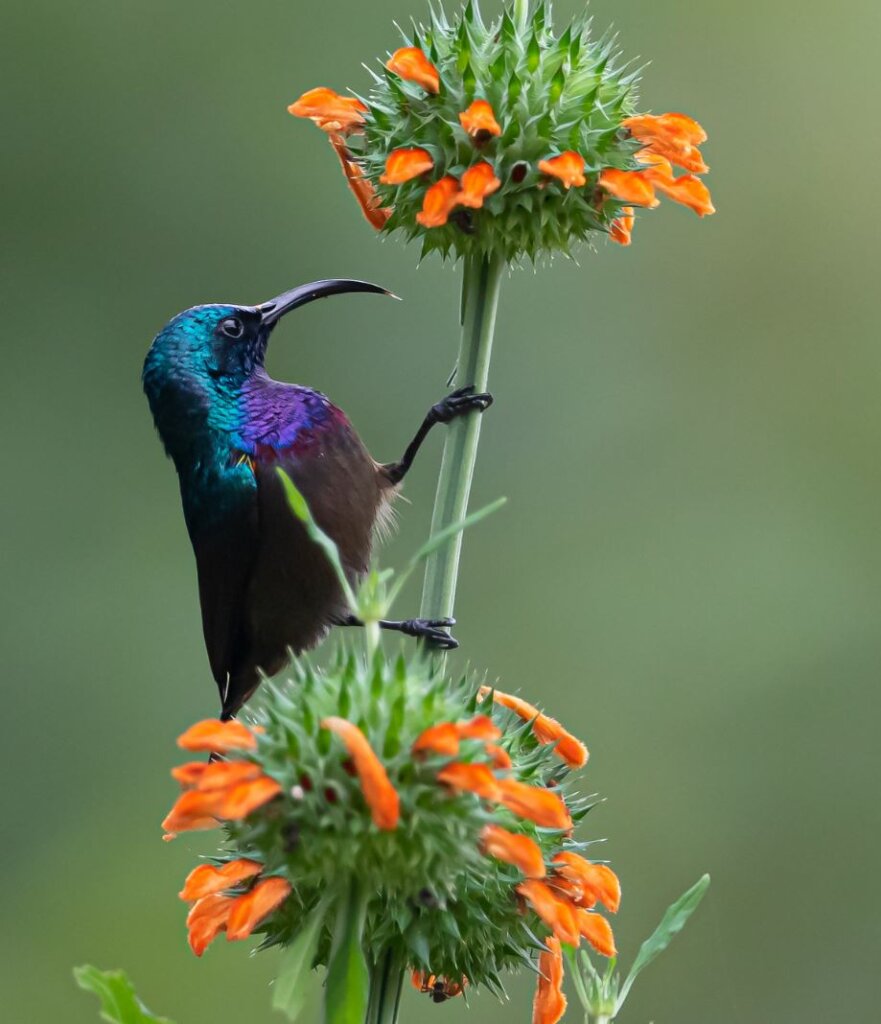
Photo (cropped) Courtesy of Hari K Patibanda / CC BY 2.0
Loten’s sunbird (Cinnyris lotenius), also known as the long-billed sunbird or maroon-breasted sunbird, is around 12 cm to 13 cm sporting a long bill with brown wings and a maroon breast band boarding a glossy purple throat. Males also have pectoral tufts of yellow mixed with crimson which are used in displays. The cap, back of the head, and upper back area is an iridescent green.
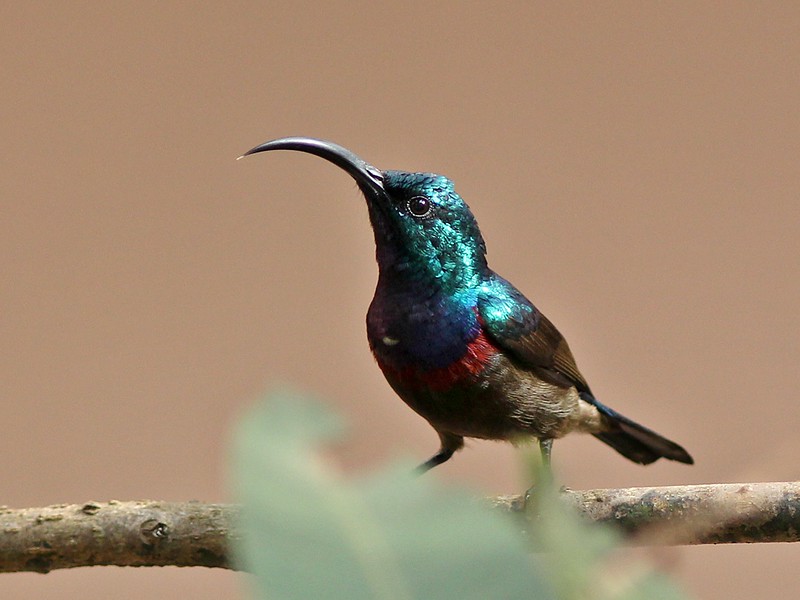
Photo Courtesy of Sandeep Gangadharan / CC BY-SA 2.0
The female has yellow to grey upper parts along with yellowish under parts.
Non-breeding males have yellow to grey upper parts, along with a blue central streak extending to the bird’s belly.
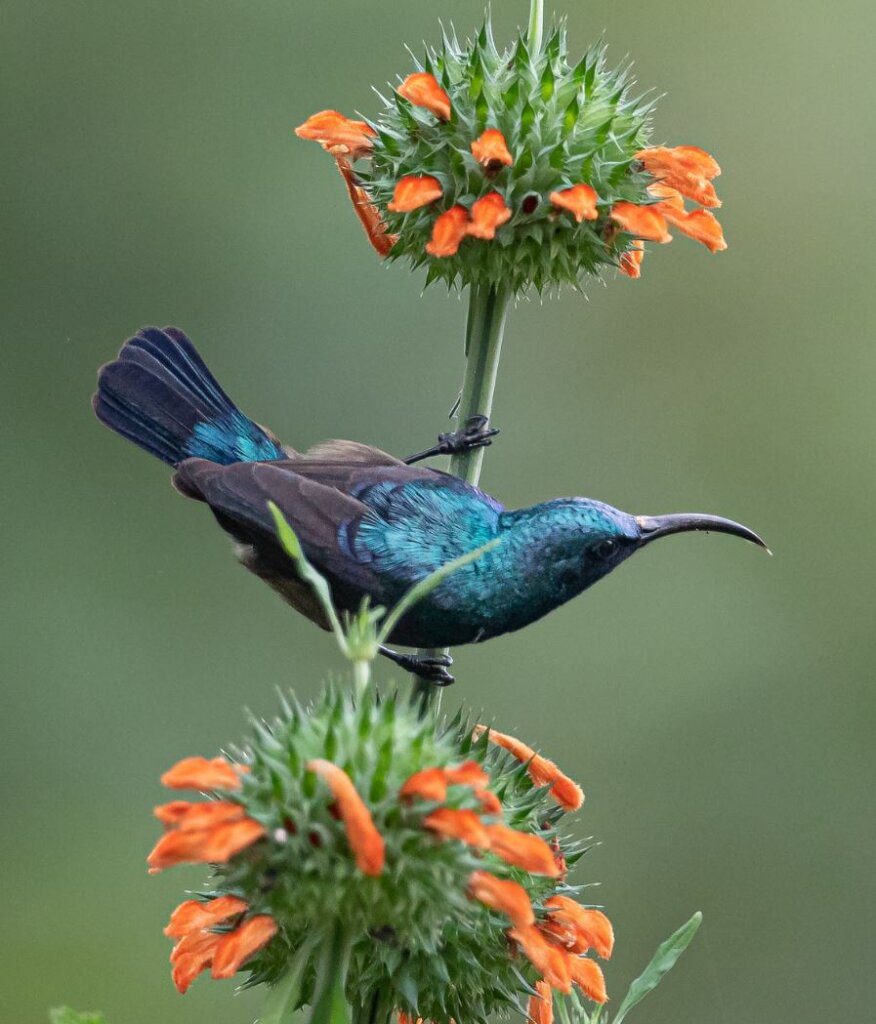
Photo (cropped) Courtesy of Hari K Patibanda / CC BY 2.0
This bird is endemic to the Indian peninsular and Sri Lanka.

Loten’s Sunbirds are common in urban gardens and in some areas such as the city of Madras, where they are more often seen than other species of sunbirds.
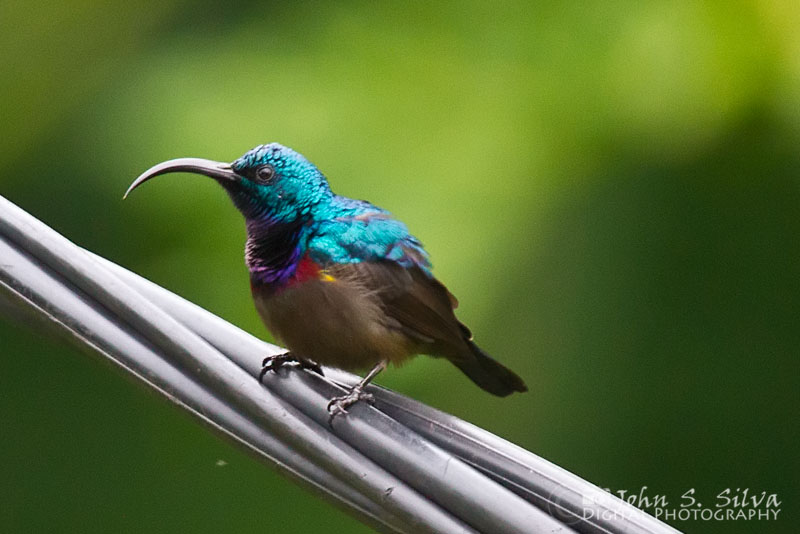
These birds feed on nectar mainly by perching to feed, however, they can also hover in front of the flower too while they feed. They will also take insects, particularly during the breeding season.
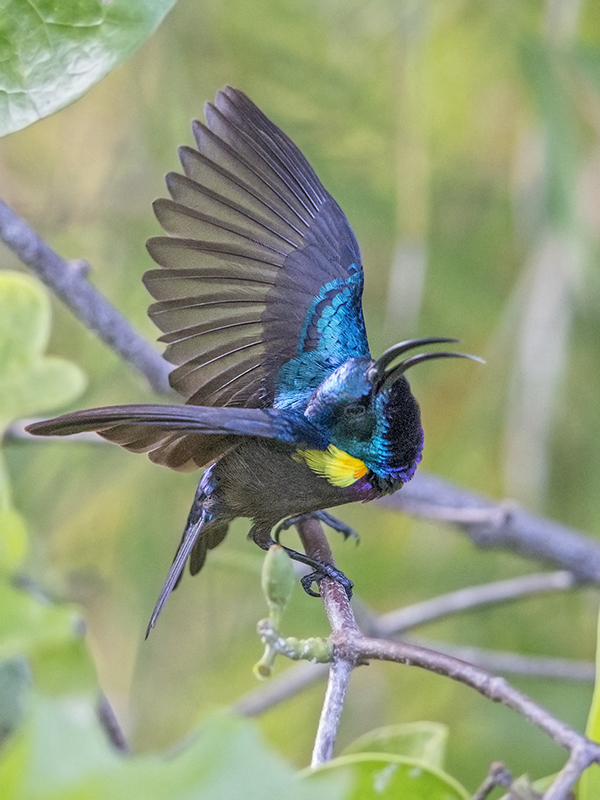
The breeding season for this species is from November through to March in India, to May in Sri Lanka when a nest is built mainly by the female made from bark, caterpillar frass, and webs, suspended from a tree. The eggs laid within are incubated by the female for around 15 days. Young, however, is fed by both the male and the female.
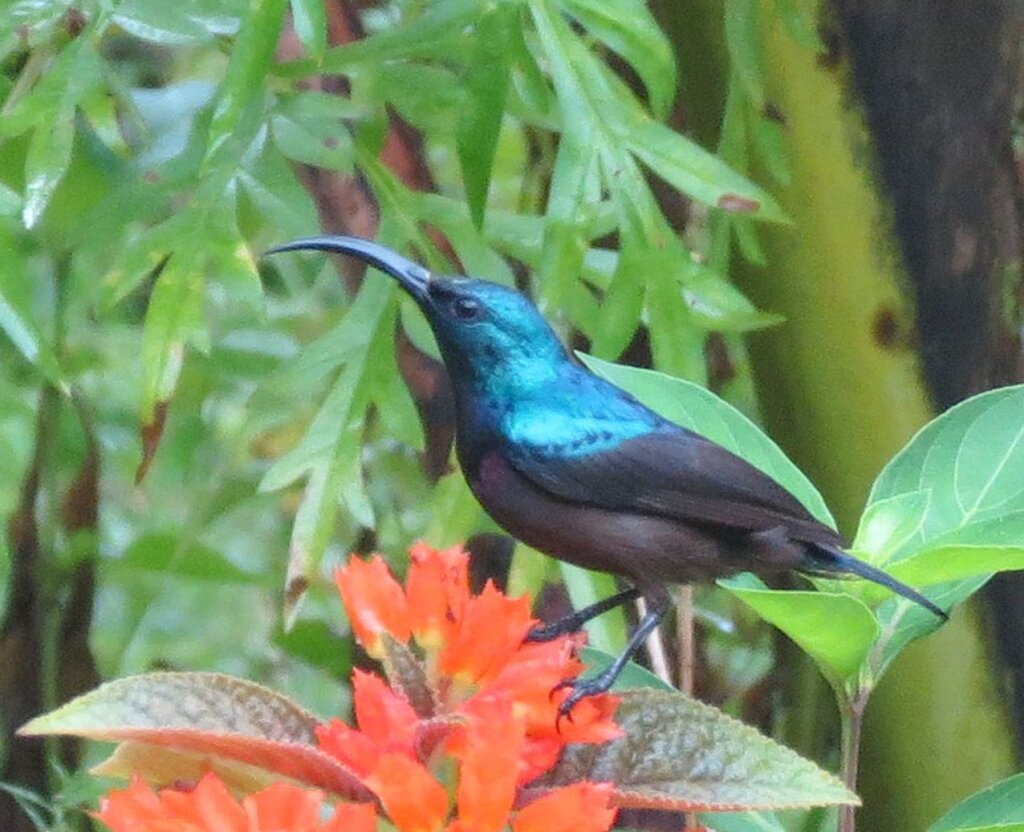
Photo Courtesy of Kumar Vaikom / CC BY-SA 2.0
This bird is considered as of Least Concern on the IUCN Red List.
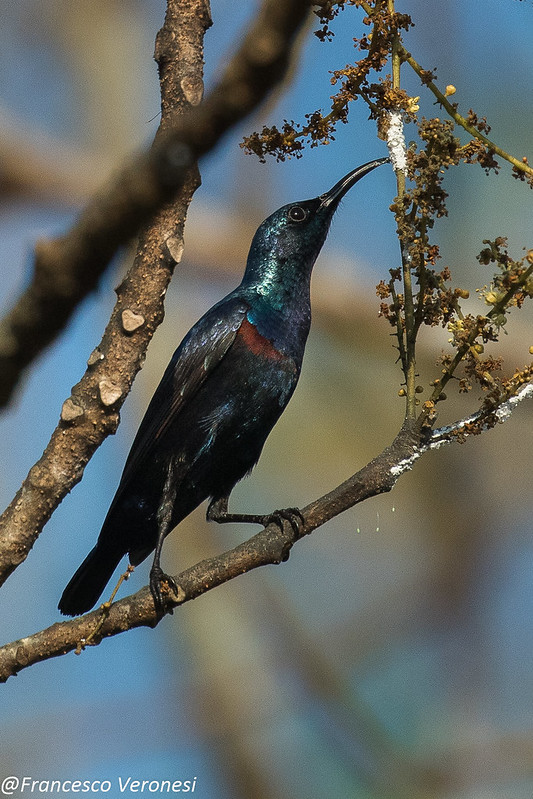
Photo Courtesy of Francesco Veronesi / CC BY-SA 2.0
You can watch this bird right here in the video below:




